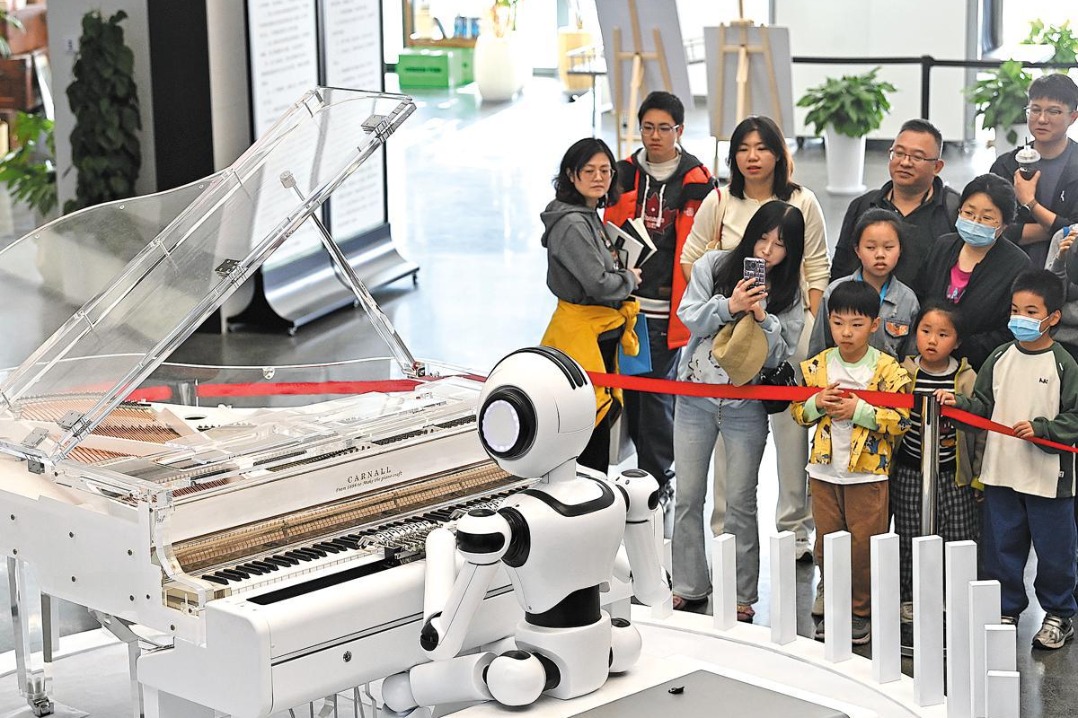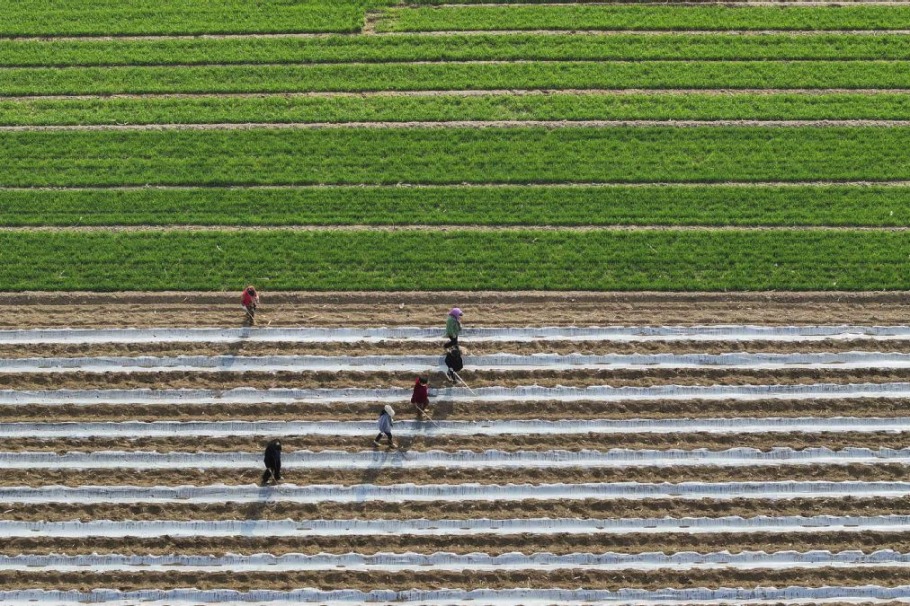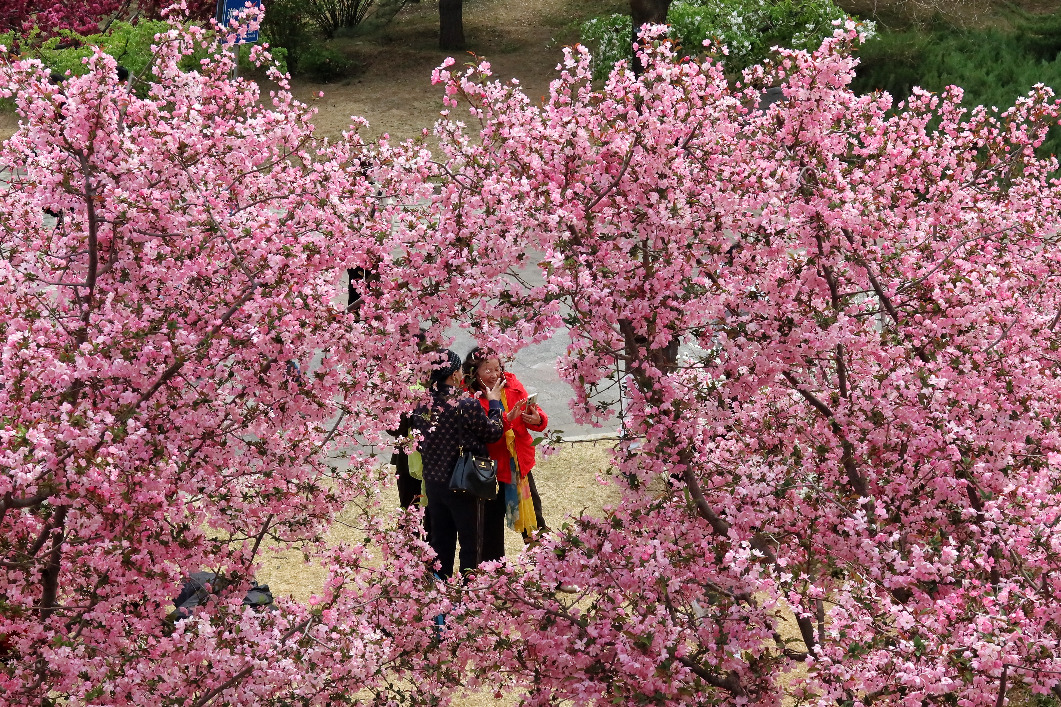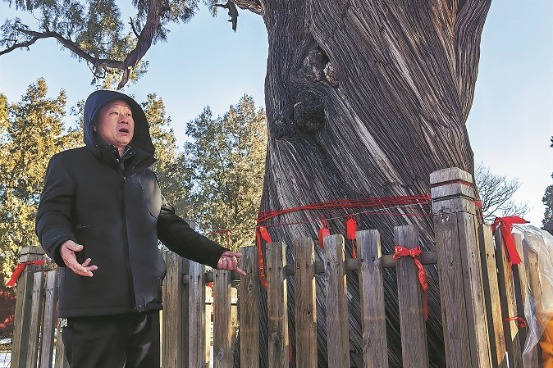Safety measures urged as catkins cause problems


Residents in Beijing are advised to go outside only in the early mornings or evenings if possible to avoid potential allergic reactions as the city enters its peak catkin season, experts said.
The white fluff floating in the air like snow is causing problems for many, as it tends to trap allergens such as pollen and dust. Symptoms reported include allergic conjunctivitis, itchy skin, rhinitis and even asthma. More residents than usual have been seen wearing face masks and goggles on city streets.
The catkin season lasts about 50 days citywide, from early April to late May. Without significant precipitation, temperature drops or strong winds, the fluff generally affects areas for around 20 days, with peak periods lasting about a week, according to a 2025 forecast released by the Beijing Meteorological Service and the Beijing Municipal Forestry and Parks Bureau.
As the daily peak period occurs from 10 am to 4 pm, residents are advised to schedule outdoor activities during the early mornings or evenings or after rainfall, when fluff dispersion is lighter, said Jiang Yingshu, director of the bureau's technology department.
Jiang explained that the fluff originates from female poplar and willow trees. After pollination, female flower clusters develop small capsules containing white, fluffy hairs that surround sesame-sized seeds.
"When these capsules mature and split open, the wind carries the seed-bearing fluff through the air. This is a natural reproductive mechanism," she said.
Poplars and willows are key species in Beijing's greenbelt and have made vital contributions to the city's environmental efforts, Jiang said.
"We should respect natural cycles and plant characteristics, maintaining a protective and tolerant attitude toward nature," she said, adding that authorities will implement multiple measures to minimize the impact on residents.
Measures include regular wetting and clearing of catkins, especially in densely populated areas such as residential zones, parks and schools. Cleaning efforts will be increased at night and before the morning rush hour, as well as during peak dispersal hours from 10 am to 2 pm and before the evening rush hour to reduce disruptions to public mobility, according to Jiang.
The city will also gradually reduce the number of female willow and poplar trees to curb catkin production at its source, she said.
Authorities are also using high-tech solutions. Flocculants — chemicals added to water to cause impurities to be clumped together — are sprayed onto tree canopies using high-pressure water guns, mist spray trucks or drones. These agents bind and shrink catkins, preventing their dispersal. The flocculant, a nontoxic, biodegradable organic polymer, naturally degrades through sunlight and rain, she said.
Zhao Tong, an ophthalmologist at China-Japan Friendship Hospital in Beijing, said the number of outpatients with allergic conjunctivitis has risen since early March, with a second peak beginning early this month.
"I see 40 to 60 patients a day, half of whom have allergies," he said. "They often report symptoms such as red and itchy eyes, with some experiencing a foreign body sensation."
Treatment typically involves eye drops and anti-allergy medications, such as antihistamines and steroids, or flushing allergens out with artificial tears, Zhao said.
Besides confining outings to the early mornings and evenings, it is recommended to stay indoors as much as possible and wear protective gear such as goggles and face masks when going out.
Zhang Yuan, chief physician at the allergy department of Beijing Tongren Hospital, said catkins may expose more people to pollen, triggering hay fever symptoms such as runny noses, sneezing, nasal itching and congestion, as well as coughing, chest tightness, wheezing and even shortness of breath.
Preventing and treating hay fever starts with allergen avoidance. Patients should identify their specific allergens and monitor local pollen concentrations. During peak periods, minimizing outdoor activities is recommended. Nasal irrigation after returning home is also encouraged.
Treatments for allergic rhinitis include antihistamines and nasal spray corticosteroids, which should be used consistently, continuously and at adequate doses, Zhang said.
"If standardized drug treatment fails to effectively alleviate symptoms, upgrading to biological therapies can be considered," she said.
Recently, experts at the hospital published research in the medical journal Nature Medicine showing that a new domestic biological agent, stapokibart, can effectively improve nasal and ocular symptoms in patients with moderate to severe seasonal allergic rhinitis.
Contact the writers at [email protected]
- Safety measures urged as catkins cause problems
- Chinese scientists reveal discovery of osteoarthritis pathogenesis mechanism
- China launches new communication technology test satellite
- Eight-point rules of the CPC seen as valuable experience in combating graft
- Sino-US education, travel hit by potential trade war
- Xi hails new phase in relations with LAC states



































